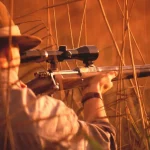Does the Firearms Act Really Balance Safety and Rights?
Are gun laws in Canada strict? Canada has a long-standing tradition of responsible gun ownership. Today, this tradition exists within a regulatory framework which is said to ensure public safety. The heart of this framework is the Firearms Act. The government claims this strikes a delicate balance between preserving the rights of law-abiding gun owners and enhancing public safety. Here, we will examine the Firearms Act in Canada and how it affects the rights of law-abiding gun owners. We will also explore the complexities of this important issue.
Understanding the Firearms Act
The Firearms Act, introduced in 1995, was a response to a series of tragic mass shootings in Canada. It serves as the cornerstone of gun control and lays out rules for the acquisition, possession, and use of firearms. Here's how it affects law-abiding gun owners:
1. Licensing Requirements:
- Rights Impacted: The Act mandates that anyone wishing to possess or acquire firearms must get a firearms license. This involves background checks, including one every 24 hours after receiving a licence, and safety training.
- Balancing Act: While perceived as an administrative hurdle, the intent is to prevent firearms from falling into the wrong hands. Law-abiding gun owners undergo background checks to ensure they are not a threat to public safety. However, critics of the Act feel, rightly so, that it affects them prejudicially. This means that the Act affects them more than it balances out with public safety. Most guns used in crime in Canada are coming from south of the border. Because of this, critics feel that redirecting resources from gun control to border safety would be a better solution.
2. Registration of Firearms:
- Rights Impacted: The Firearms Act requires gun owners to register their firearms, including restricted and prohibited firearms.
- Balancing Act: This registration system helps law enforcement track firearms, which can be essential in solving crimes and preventing illegal transfers. However, it has been controversial among some gun owners who view it as an invasion of privacy. One only needs to ask, how many of the crimes in Canada are traced to Canadian registered firearms? Now how many of those firearms are legal at the time of the commission of a crime?
3. Restricted and Prohibited Firearms:
- Rights Impacted: The Act designates certain firearms as "restricted" or "prohibited," imposing additional regulations and restrictions on their possession and use.
- Balancing Act: These designations try to ensure that firearms with a higher potential for misuse are subject to stricter controls. Law-abiding gun owners can still possess these firearms, but they must adhere to tighter regulations. What most don't understand is the difference between these firearms and their non-restricted cousins. Many of the restricted and prohibited firearms are based on looks. They may even be the same gun with different aesthetics, but the same function. The image below is of the Mossberg Blaze (top) and the Mossberg Blaze 47 (bottom). These two rifles are the same rifle, save for the way they look. Functionally, they work exactly the same, there is nothing different. However, because of the look of the bottom rifle, it is prohibited, and the top one is non-restricted. Is this balanced thinking?

4. Storage and Transportation:
- Rights Impacted: The Act establishes stringent requirements for the storage and transportation of firearms, including trigger locks and secure storage containers.
- Balancing Act: These requirements help prevent theft and unauthorized access to firearms. For law-abiding gun owners, they represent a responsibility to ensure the safe handling and storage of their firearms. What about having a firearm for self defence? In Canada, we aren't typically allowed to purchase a firearm for that purpose; however, it is a recognized use in rural areas. Most gun owners agree that safe storage is a legitimate regulation, but it could be relaxed somewhat.
5. Screening for Mental Health Issues:
- Rights Impacted: The Act empowers authorities to assess the mental health of firearms license applicants.
- Balancing Act: This provision is aimed at individuals who may pose a risk to themselves or others, given access to firearms. Law-abiding gun owners may see this as a necessary precaution to maintain public safety, but is it? Who decides what proper mental health is, and what is considered mentally ineligible? Does that change with a government places labels on people they don't like, or who don't agree with them? These are legitimate questions that gun owners are asking, and they are understandable. We can all agree that access to firearms for mentally unstable people is a bad thing, I'm sure of that. However, are the current laws working to stop that?
Conclusion
The Firearms Act in Canada is a complex piece of legislation that aims to balance the rights of law-abiding gun owners while enhancing public safety. While it does impose certain regulations and requirements on gun owners, its primary goal is to minimize the risks associated with firearms ownership and use. So, are gun laws in Canada strict? Yes, they are very strict.
Ultimately, the effectiveness of the Firearms Act in striking this balance remains a subject of ongoing debate and scrutiny. Law-abiding gun owners, like any group, have varied opinions on the Act's impact on their rights. Nevertheless, the Act attempts to reflect a commitment to responsible gun ownership within a regulatory framework. It aims to prevent misuse, enhance public safety, and preserve the Canadian tradition of firearm ownership.



